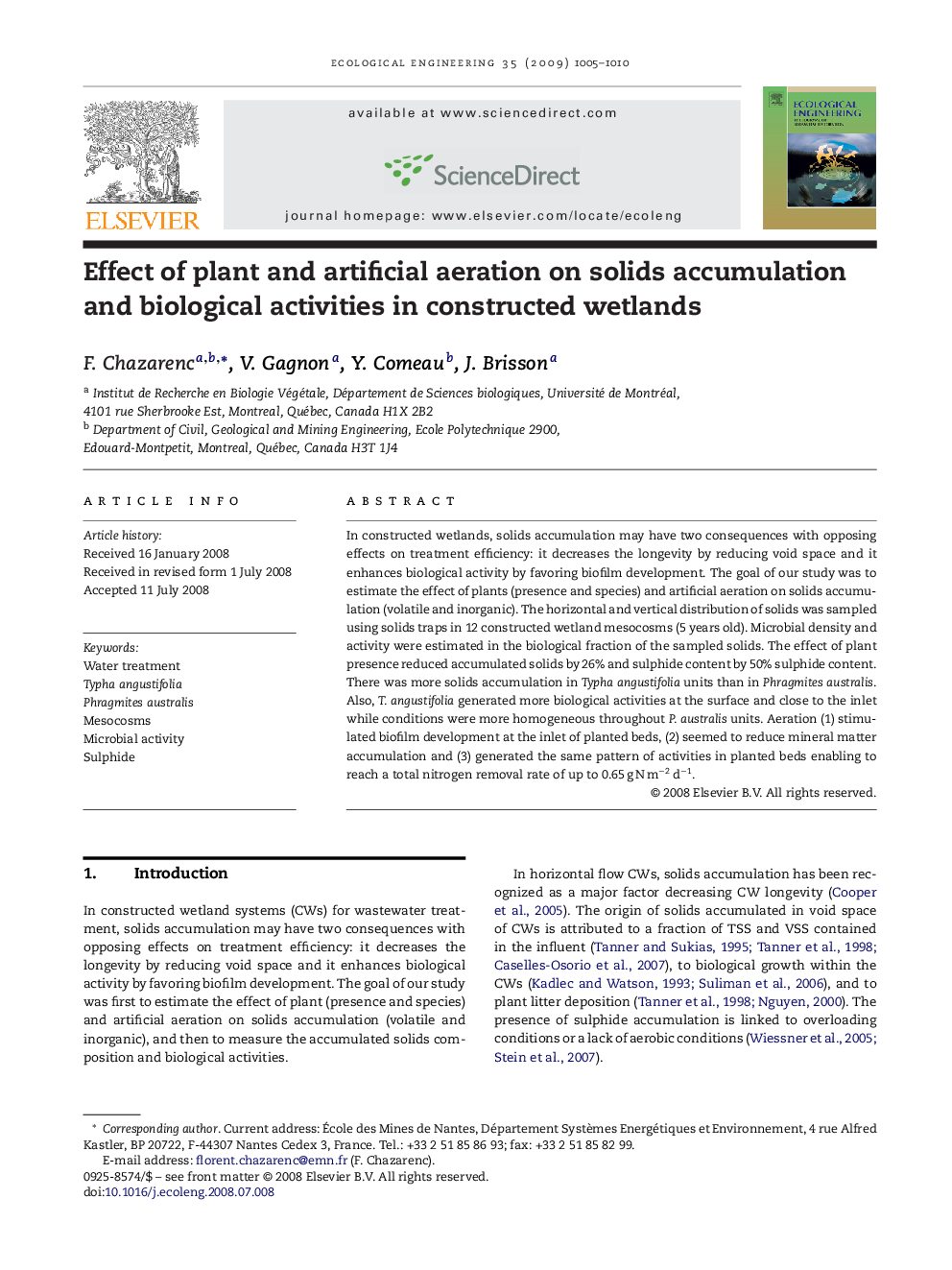| Article ID | Journal | Published Year | Pages | File Type |
|---|---|---|---|---|
| 4390899 | Ecological Engineering | 2009 | 6 Pages |
Abstract
In constructed wetlands, solids accumulation may have two consequences with opposing effects on treatment efficiency: it decreases the longevity by reducing void space and it enhances biological activity by favoring biofilm development. The goal of our study was to estimate the effect of plants (presence and species) and artificial aeration on solids accumulation (volatile and inorganic). The horizontal and vertical distribution of solids was sampled using solids traps in 12 constructed wetland mesocosms (5 years old). Microbial density and activity were estimated in the biological fraction of the sampled solids. The effect of plant presence reduced accumulated solids by 26% and sulphide content by 50% sulphide content. There was more solids accumulation in Typha angustifolia units than in Phragmites australis. Also, T. angustifolia generated more biological activities at the surface and close to the inlet while conditions were more homogeneous throughout P. australis units. Aeration (1) stimulated biofilm development at the inlet of planted beds, (2) seemed to reduce mineral matter accumulation and (3) generated the same pattern of activities in planted beds enabling to reach a total nitrogen removal rate of up to 0.65 g N mâ2 dâ1.
Related Topics
Life Sciences
Agricultural and Biological Sciences
Ecology, Evolution, Behavior and Systematics
Authors
F. Chazarenc, V. Gagnon, Y. Comeau, J. Brisson,
